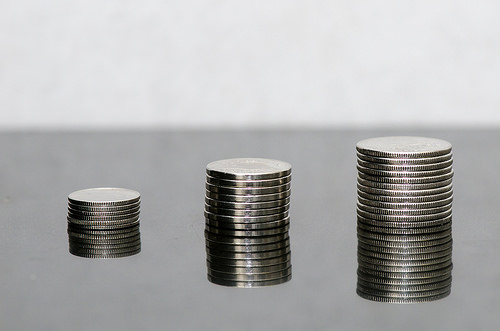
Photo by marc falardeau 
Student loan payments can be a big hassle for many graduates.
Among the major complaints are that many students cannot afford to make their monthly payments once they come due.
Do you need to lower your monthly payment to help make ends meet? Well, you’re in luck. There are a number of ways to reduce the amount you spend each month on student loans.
1. Consolidate your federal loans
The simplest and quickest way to reduce your student loan payment is to consolidate any of your federal student loans if you have no already done so.
Depending on the total amount that you owe, consolidating your loans can qualify you for extended repayment terms for up to 30 years. This could dramatically cut down on your monthly student loan bill.
This step will not save you money over the long term, however, as the interest rate that you receive on your new consolidated loan will be equal to a simple weighted average of the original loans. In fact, if you consolidate your loans and extend your repayment, then you will end up paying more over the life of your loan. But, it will allow you to move all of your loans into one lump sum and make a single payment.
2. Sign up for income-based repayment
Another option to reduce the amount that you pay each month on your federal loans (private loans will not qualify) is to sign up for one of the income-based repayment plans (IBR) offered by the U.S. Department of Education.
Under this plan, your payment will be capped at a fixed percentage of your discretionary income each month–about 10 to 20%.
While this option can lower your payment, it’s very important to know that upon signing up for this option, you are committing to repaying this fixed percentage of your income until your loans are completely repaid for as long as 20 or 25 years, which means you will end up paying significantly more over the life of your loan versus the standard 10-year term.

3. Sign up for graduated repayment

Photo by MorboKat 
Is your income temporarily low, but likely to increase dramatically in the future?
The U.S. Department of Education offers a graduated repayment plan for borrowers that allows them to reduce their monthly payment for the near term and then have the payments increase over time to eventually catch up with a traditional repayment plan.
If you’re in a situation where you have strong confidence that your salary will increase significantly in the future, then this may be a way to give yourself more breathing room immediately without committing to paying for your loans any longer than you have to. But, keep in mind that this plan does not take your income into account, so even if you don’t end up earning any more in the future, your payments will still continue to rise.
4. Extend your repayment period
Aside from the extension that you can qualify for by consolidating your federal student loans, you can also look to private refinance as a way to extend the period of your loans.
Many lenders offer refinancing for up to 25 years, and you can include federal or private loans in the process.
This can help you simplify and reduce your payments, but, again, keep in mind that refinancing over a longer term means you’ll end up paying more over time.
5. Lower your interest rate
Probably the best way to lower your payment is to simply refinance your student loans at a lower rate.
Many private lenders will allow you to refinance your federal or private student loans, or consolidate both of them into a single loan. If you can qualify for a lower rate, you may be able to refinance over the same term and still save money every month, or even refinance over a shorter period and save money now as well as over the life of your loans.
You can find private lenders with interest rates as low as 1.92% and you can check out multiple lenders to see which ones can offer you the best refinance deal.


